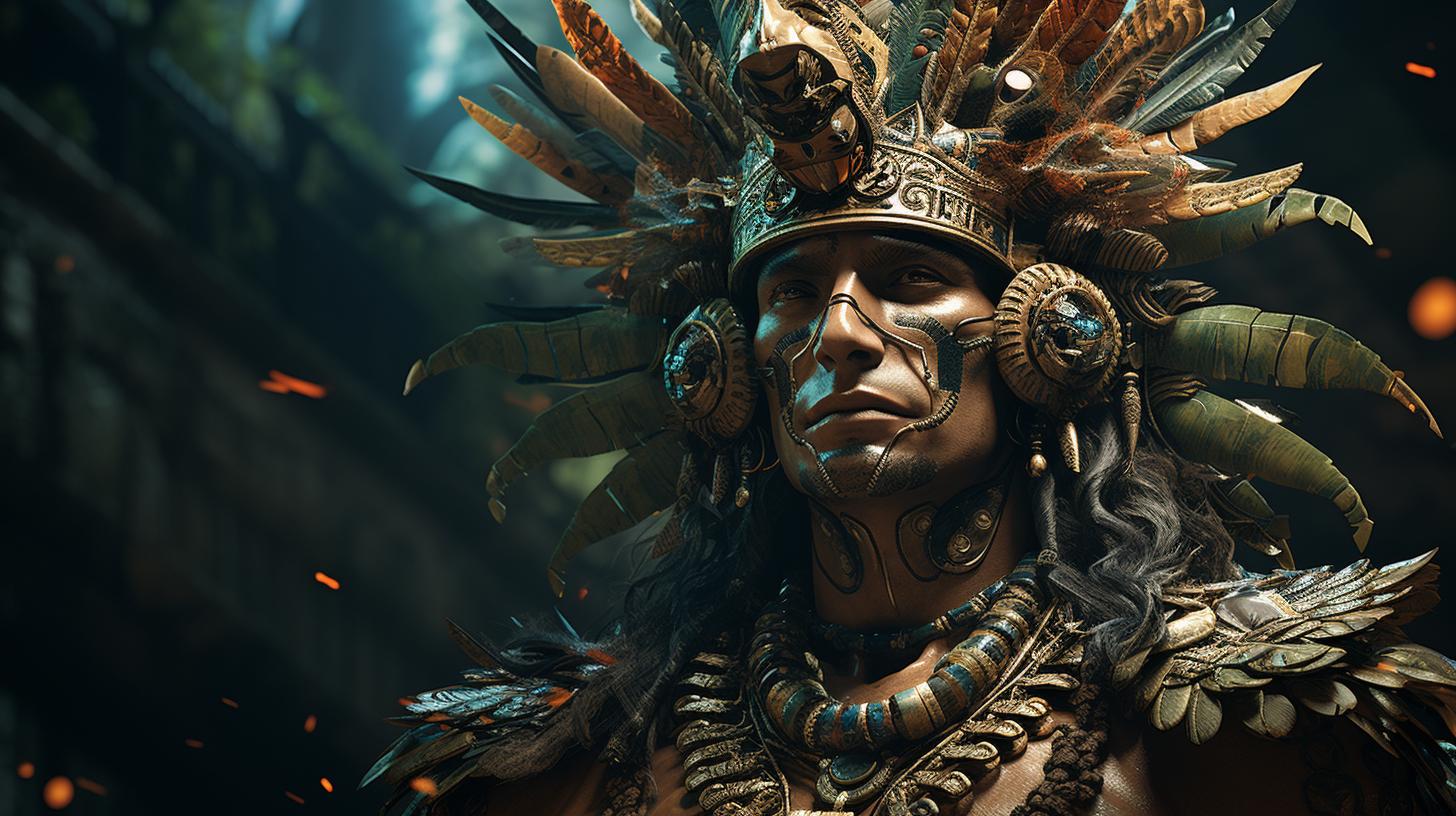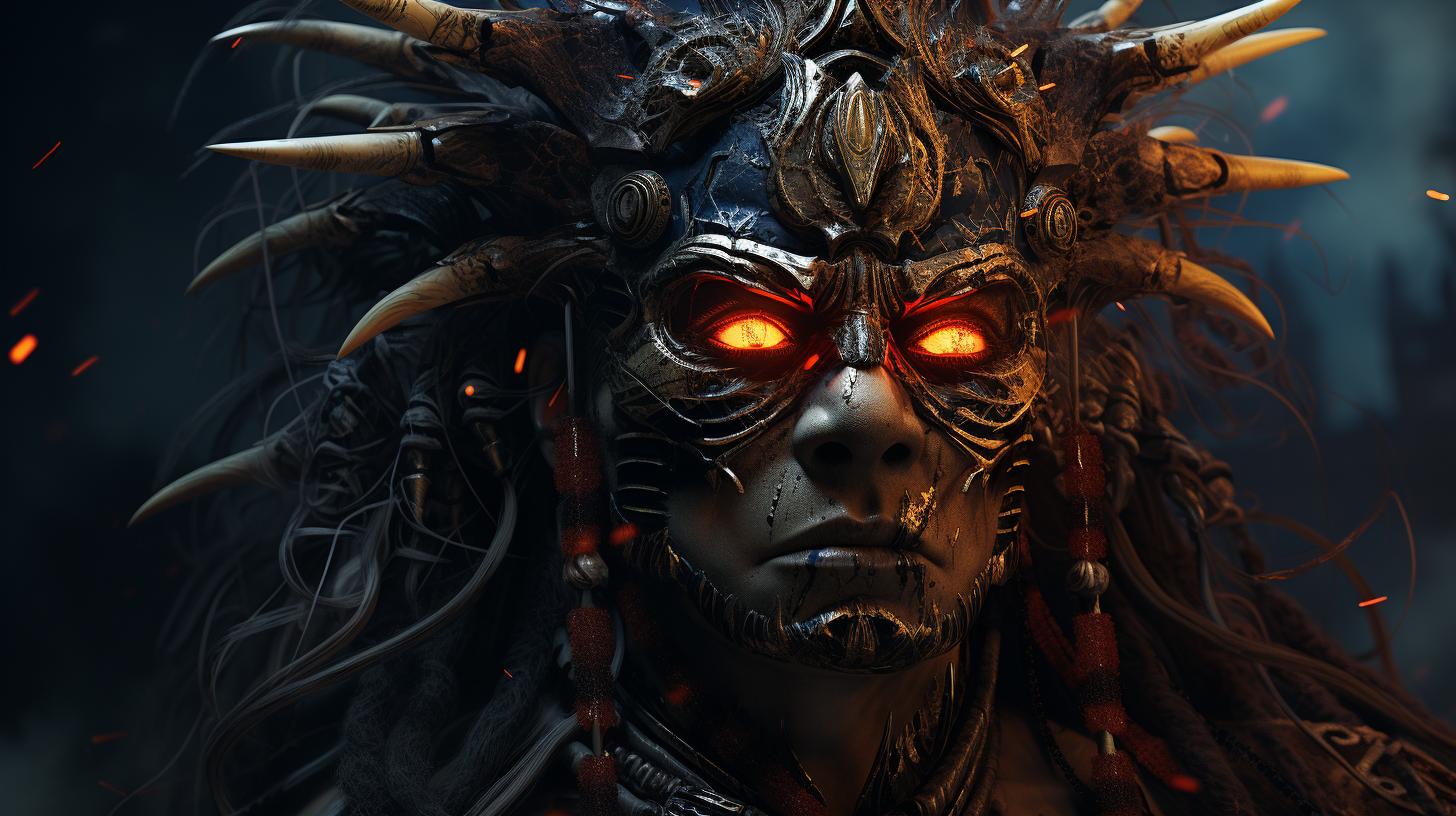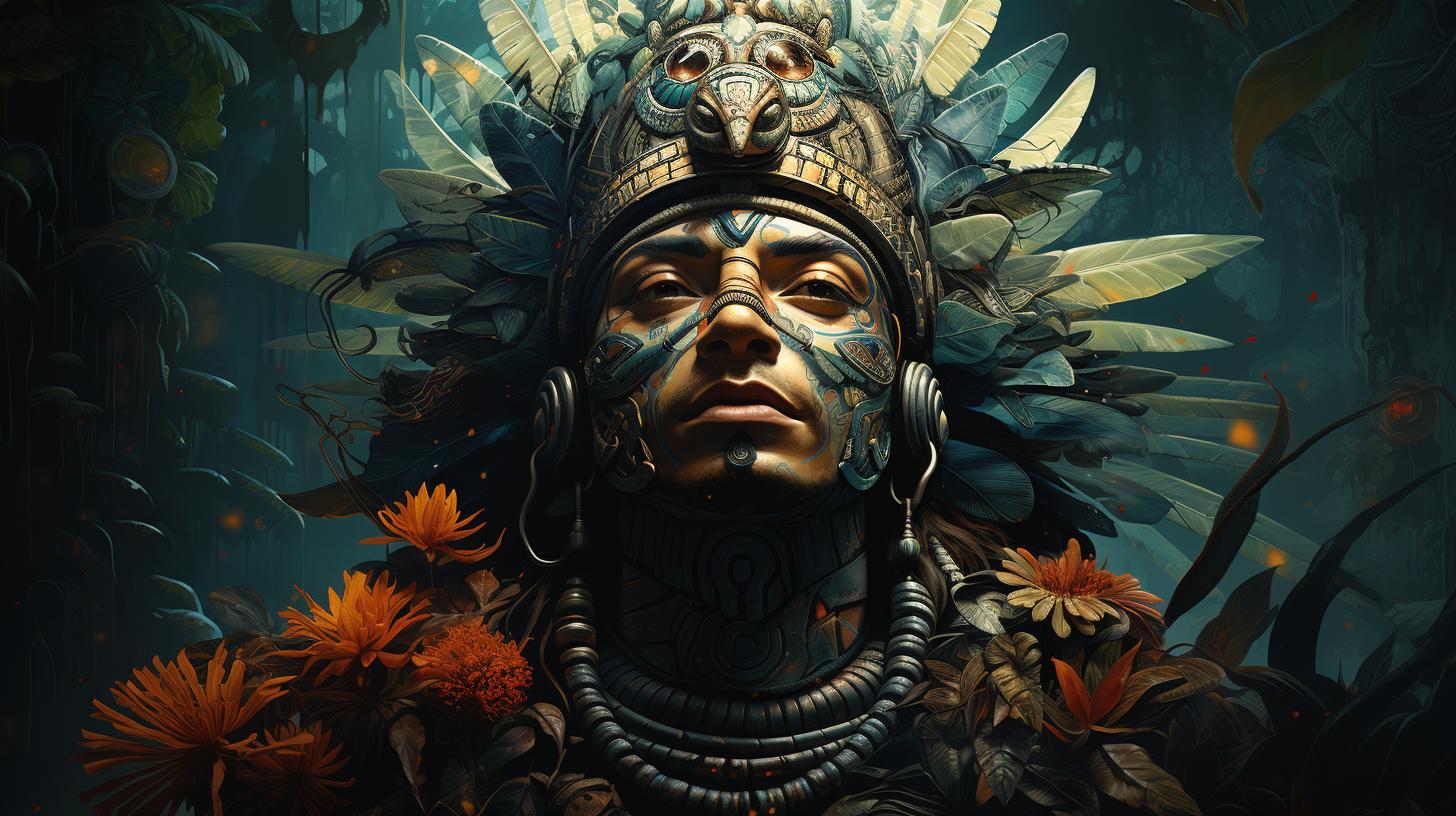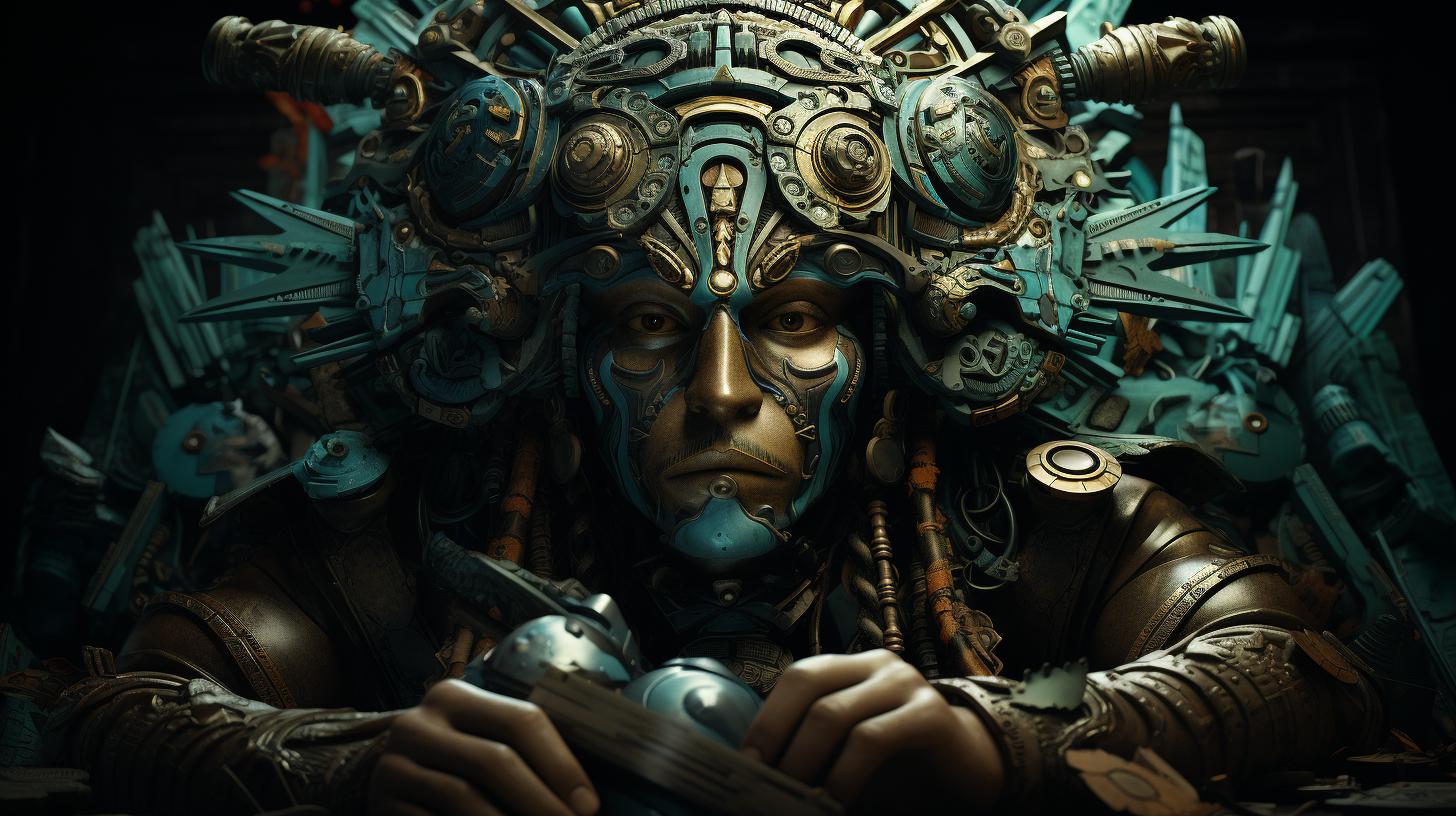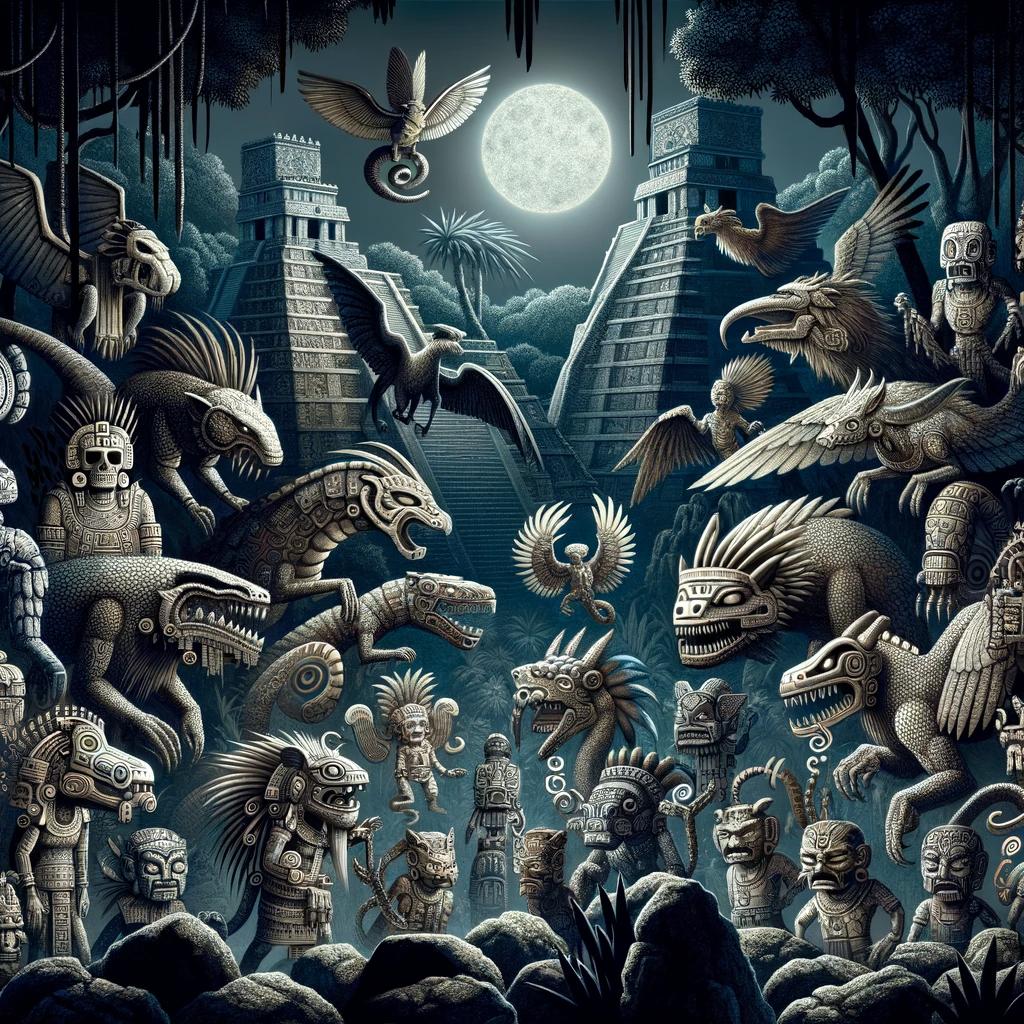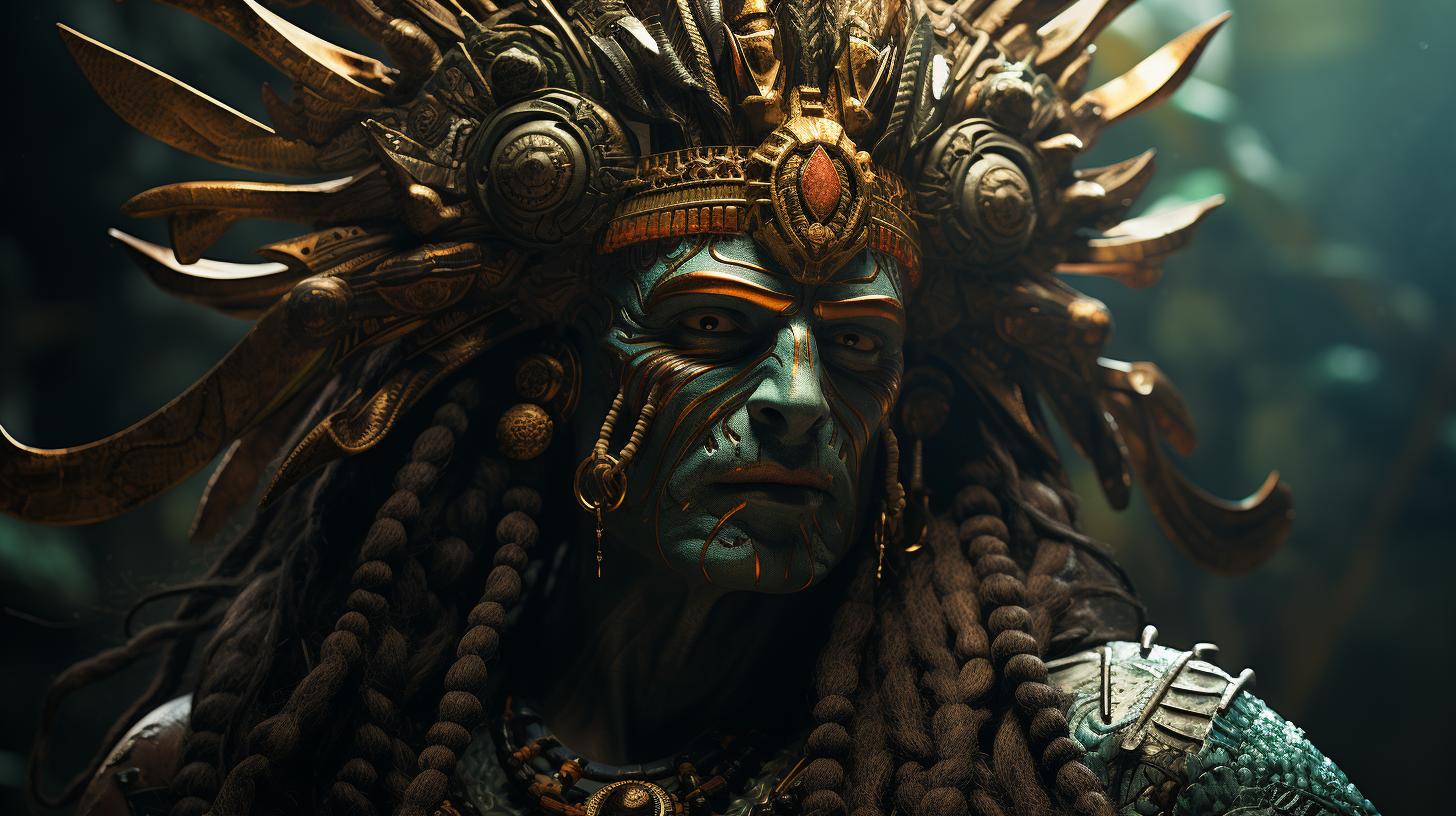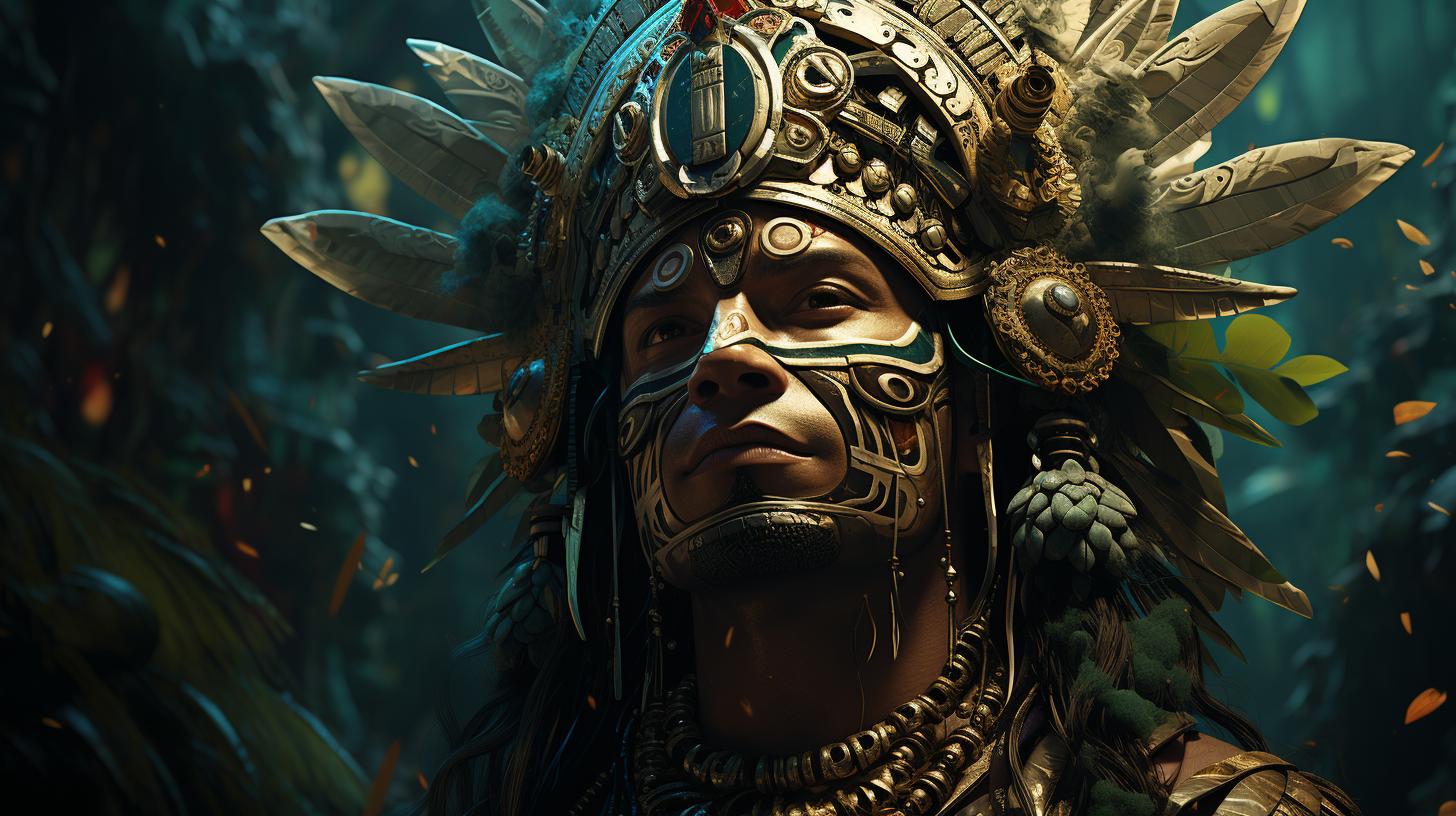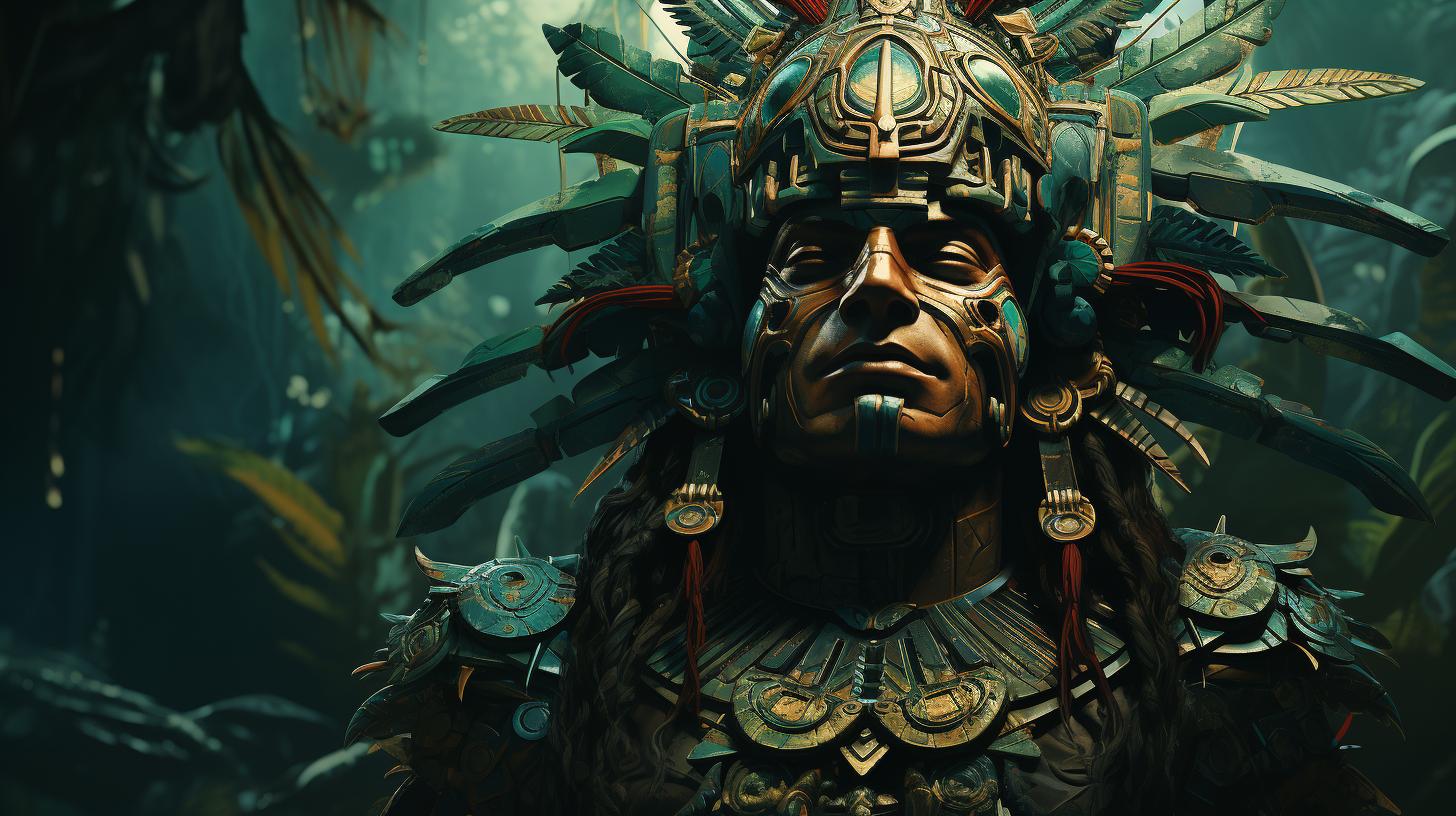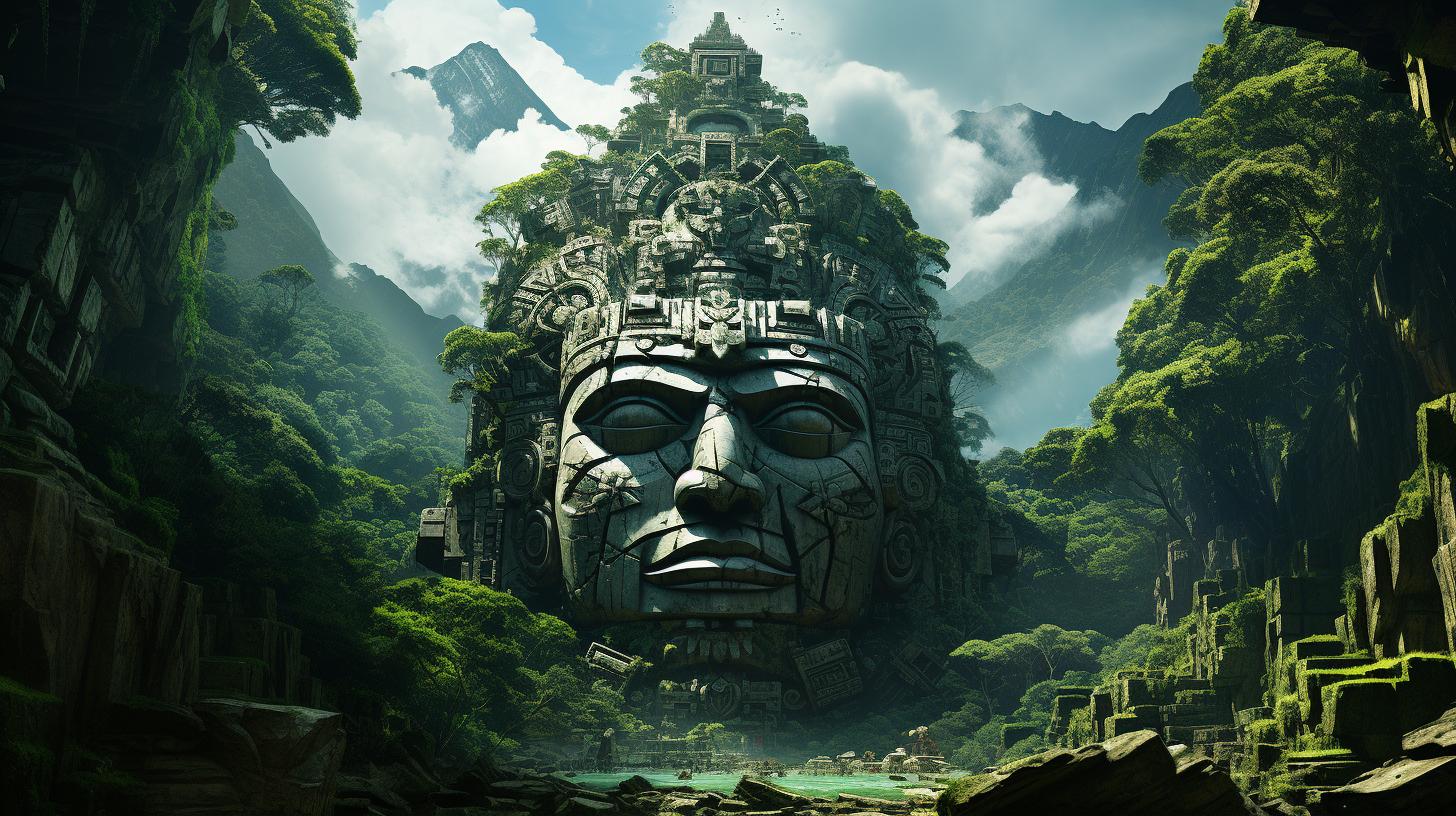Mysterious Maya God Kawil: Unveiling Secrets of Ancient Deity
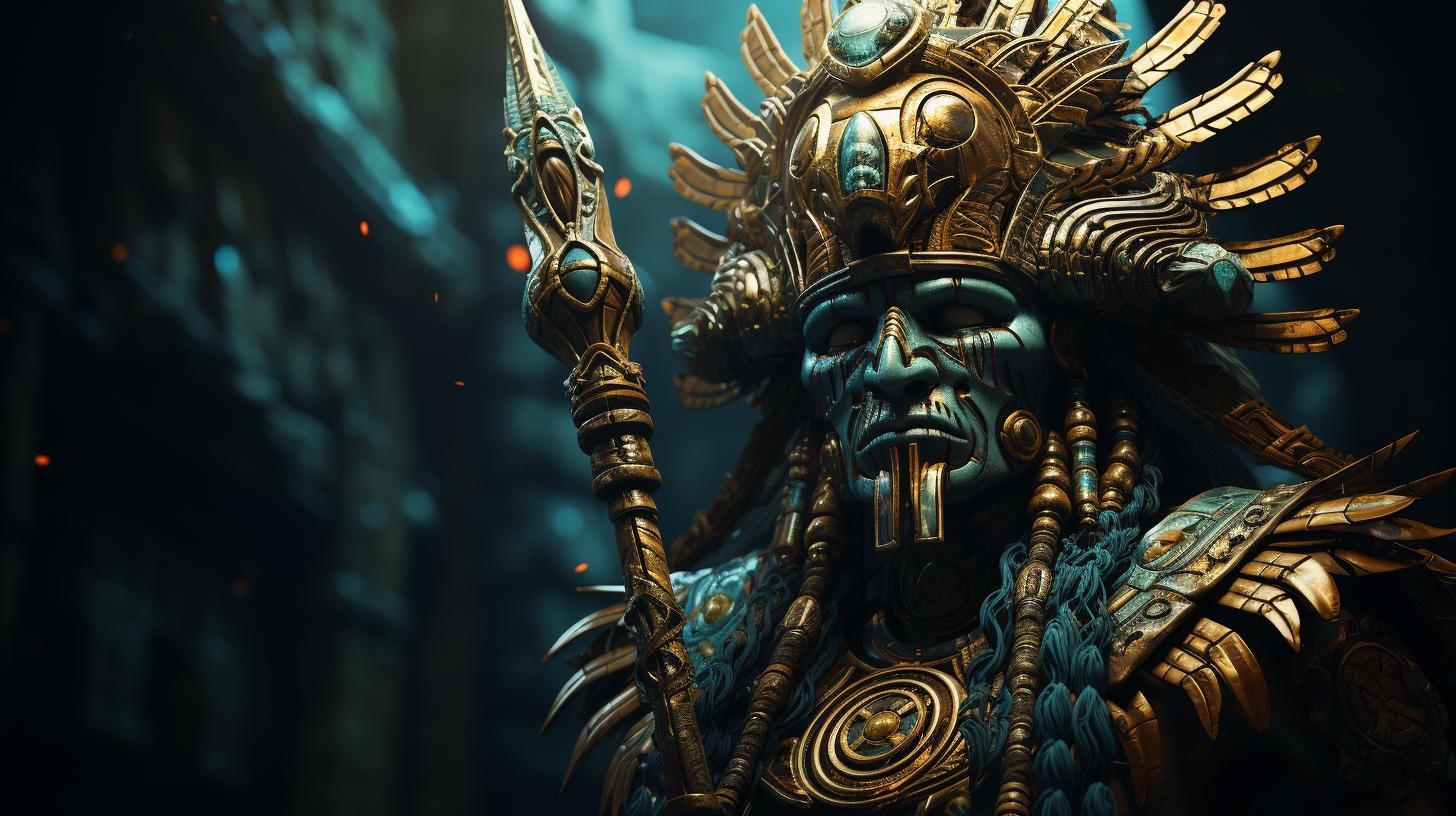
Maya god Kawil holds a significant place in the ancient Maya civilization. Known as the lightning god, Kawil is depicted in various forms of art, including stone sculptures and paintings.
Associated with fertility and maize, this deity played a crucial role in rituals and ceremonies. Recent excavations have revealed artifacts dedicated to Kawil, shedding light on this divine figure’s influence. Today, Kawil’s legacy lives on in contemporary Maya culture, and artworks inspired by him continue to captivate modern society.
Journey into the captivating world of Maya god Kawil and explore its rich symbolism and historical significance.
Exploring the Ancient Maya Civilization
The ancient Maya civilization, known for its rich cultural and artistic heritage, is a fascinating subject of study. By delving into their religious beliefs and practices, we can gain a deeper understanding of their worldview.
This section will explore various aspects of the Maya civilization, including their pantheon of deities, the significance of Kawil in their religious system, and the rituals and sacrifices associated with Kawil worship.
Mayan Deities: Understanding the Pantheon
The Maya pantheon consists of a vast array of deities, each holding a unique role and significance. From gods and goddesses of fertility to those governing natural forces, their belief system encompassed various aspects of life.
Exploring the pantheon allows us to grasp the complexity and diversity of Maya religious practices.
The Significance of Kawil in Maya Religion
Kawil holds a paramount role in Maya religion, symbolizing power, fertility, and the celestial realm. As the god of lightning, he was believed to control the forces of thunderbolts and storms.
Understanding Kawil’s significance sheds light on how he influenced religious ceremonies and played a pivotal role in the Maya worldview.
Rituals and Sacrifices Associated with Kawil Worship
The worship of Kawil involved elaborate rituals and sacrifices aimed at appeasing the deity and seeking his blessings. These rituals varied in form and intensity, and understanding them provides insights into the religious practices and beliefs of the ancient Maya.
From bloodletting ceremonies to the offering of precious objects, these acts of devotion helped establish a connection with Kawil and the divine realm.
The Symbolism of Kawil in Maya Art
The artwork of the ancient Maya civilization is replete with rich symbolism, and the figure of Kawil holds a prominent place in their artistic expressions. Through stone sculptures and vibrant murals, the Maya artists portrayed the essence of Kawil and his significance in their religious and cultural beliefs.
Depictions of Kawil in Stone Sculptures
Intricately carved stone sculptures provide valuable insights into the symbolism surrounding Kawil. These sculptures often depict the distinctive features of the god, including his high forehead adorned with a pill-shaped cartouche from which smoke-like feathers emerge.
The stone carvings beautifully capture the essence of Kawil and offer a tangible representation of his power and influence.
The Stone Carvings of Kawil Heads
Among the notable stone sculptures are those showcasing the distinctive head of Kawil. These sculptures focus on the divine countenance, emphasizing the intricate details of his facial features and the elaborate headdress.
The stone carvings of Kawil heads serve as powerful symbols of his presence and his role as a protector and intermediary between the human and spirit realms.
Zoomorphic Representations of Kawil
In addition to the divine human form, Kawil is also depicted in zoomorphic representations, intertwining elements of human and animal.
These sculptures showcase the fusion of the god and various animal forms, symbolizing his connection to nature and the animal world. The zoomorphic representations of Kawil serve as a testament to the intricate belief system of the ancient Maya, highlighting their reverence for the natural world.
Kawil in Maya Painting and Murals
The Maya also expressed their intricate understanding of Kawil through vibrant paintings and murals. These artistic creations provide a visual narrative of the mythology and stories surrounding the god, offering a glimpse into the complexity of Maya cosmology.
Maya paintings and murals depict Kawil in various ceremonial and ritual contexts, highlighting his role as the lightning god. They often portray him with symbols of thunder and lightning, emphasizing his association with natural phenomena.
These intricate artworks not only showcase the artistic skills of the Maya but also serve as a means of transmitting their beliefs and cosmological understanding to future generations.
The symbolism of Kawil in Maya art is a testament to the deep spiritual and cultural significance of this divine figure.
Through stone sculptures and vibrant murals, the Maya artists captured the essence of Kawil, embodying his power, connection to nature, and role in their religious rituals. These artistic expressions continue to fascinate and inspire, allowing us to glimpse into the profound worldview of the ancient Maya civilization.
The Role of Kawil as the Lightning God
Kawil, a prominent deity in Maya mythology, holds a significant role as the god of lightning and thunderbolts. In this section, we explore Kawil’s associations with these powerful natural phenomena and delve into the intriguing mythological stories and legends that surround this captivating deity.
Kawil’s Associations with Lightning and Thunderbolts
Kawil is closely linked to lightning and thunderbolts, which are often depicted as symbols of his divine power. The Maya believed that the sudden flashes of lightning and the resounding thunderclaps were manifestations of Kawil’s presence in the mortal realm, emphasizing his connection to the celestial realm.
The imagery associated with Kawil’s lightning and thunderbolts often represents his ability to bring forth both life and destruction. The Maya perceived lightning as a source of fertility, rejuvenation, and agricultural abundance, while also recognizing it as a force capable of causing destruction and chaos.
Mythological Stories and Legends Surrounding Kawil
Mythology plays a crucial role in understanding the significance of Kawil in Maya culture. Numerous legends and stories have been passed down through generations, shedding light on Kawil’s origins, exploits, and diverse roles within the pantheon of Maya deities.
One such mythological tale recounts Kawil’s role in the creation of the world. According to legend, it was Kawil who, through his lightning and thunderbolts, helped shape the Earth and bring life to its inhabitants, including the ancient Maya civilization.
Additionally, Kawil is often depicted as an intermediary between the celestial and earthly realms, serving as a messenger and bringing divine knowledge and guidance to humanity. He is associated with wisdom, spiritual enlightenment, and the cosmic forces that govern the universe.
Through these mythological stories and legends, the Maya sought to understand their place in the world and the intricate web of cosmic forces that shaped their lives. Kawil’s role as the lightning god served as a bridge between the mortal realm and the divine, offering guidance and protection to those who worshipped and revered him.
As we delve deeper into the multifaceted role of Kawil as the lightning god, we uncover the rich layers of symbolism and meaning that surround this prominent deity within Maya culture.
Kawil and the Maize God Connection
The deity Kʼawiil holds profound symbolism in Maya culture, particularly in connection with fertility and maize. Known as the “Lightning God,” Kʼawiil represents the vital force that brings life to the crops and sustains the people.
This section explores the significance of Kʼawiil as a symbol of fertility and its association with maize.
Kʼawiil as a Symbol of Fertility and Maize
Kʼawiil’s close ties to fertility stem from its role as a maize deity. Maize holds immense importance in Maya society, representing sustenance and abundance. Kʼawiil, with its association with lightning and thunderbolts, is seen as the divine force that nourishes the crops, ensuring a bountiful harvest.
This divine connection positions Kʼawiil as a key figure in promoting the fertility and prosperity of the land.
Depiction of Maize God in Art
- Kʼawiil is often depicted in artworks holding a corn cob or adorned with maize motifs, highlighting its significance as a maize deity.
- These representations symbolize the life-giving qualities of maize and its integral role in Maya agricultural practices.
- Through art, Kʼawiil serves as a visual reminder of the importance of maize in sustaining the Maya civilization.
Ceremonial Practices and Offerings to Kʼawiil in Relation to Maize
- Ceremonies dedicated to Kʼawiil often involved offerings of maize, emphasizing its connection to fertility and abundance.
- During agricultural rituals, prayers and rituals were conducted to honor Kʼawiil and seek blessings for a fruitful harvest.
- Sacrificial offerings, such as animals or precious objects, were made to appease Kʼawiil and ensure the fertility of the land.
The interplay between Kʼawiil as a symbol of fertility and its close association with maize underscores the deep-rooted agricultural and spiritual practices of the Maya civilization.
Understanding this connection provides valuable insights into the fundamental beliefs and cultural traditions of the Maya people in relation to sustaining their livelihoods through the cultivation of maize.
Exploration of Recent Discoveries
The exploration of recent discoveries surrounding Maya god Kawil has shed new light on the ancient civilization.
Excavations and unearthing of Kawil artifacts have allowed researchers to gain insight into the religious practices and artistic representations of this important deity.
Excavations and Unearthing of Kawil Artifacts
Archaeological efforts have brought forth a remarkable array of Kawil artifacts. Through careful digging and examination, archaeologists have unearthed exquisite sculptures, pottery, and other ceremonial objects dedicated to this powerful deity.
These finds have provided invaluable clues about Maya religious rituals and the significance of Kawil in their belief system.
Archaeological Sites and Temples Dedicated to Kawil
The discovery of several archaeological sites and temples dedicated to Kawil has further deepened our understanding of his importance in Maya society. These sites, marked by intricate architectural features and elaborate inscriptions, serve as sacred spaces where worshippers would pay homage to Kawil and seek his blessings.
The exploration of these sites has revealed fascinating details about the religious practices and ceremonial activities associated with this deity.
Modern Interpretations and Influence of Kawil
Kawil’s legacy continues to thrive in contemporary Maya culture, where his significance transcends time and remains an integral part of their identity.
Kawil’s Legacy in Contemporary Maya Culture
Kawil’s influence can be seen in various aspects of modern Maya society, from religious practices to artistic expressions. He is revered as a powerful deity who symbolizes fertility, abundance, and protection.
- Maya Rituals: Many traditional ceremonies and rituals still incorporate Kawil’s presence, invoking his blessings and guidance in important life events such as weddings, births, and harvests. These rituals reinforce the connection between the Maya people and their ancient heritage.
- Cultural Festivals: In vibrant celebrations and festivals, Kawil takes center stage, as communities come together to commemorate their history and honor their ancestors.
These events showcase traditional dances, music, and elaborate costumes inspired by Kawil.
- Religious Beliefs: Kawil remains a significant figure in Maya spirituality, as devotees embrace his teachings and seek his divine intercession.
His enduring presence reflects the resilience of Maya traditions in the face of modern challenges.
Artistic Representations and Influences in Modern Society
Kawil’s imageries have also made a profound impact on contemporary art and popular culture, transcending borders and capturing the imagination of people worldwide.
- Visual Arts: Many contemporary artists draw inspiration from Kawil’s iconography, incorporating his distinctive features and symbolism into their paintings, sculptures, and murals.
Through their creations, they explore the complexities of Maya culture and its relevance in the modern world.
- Literature and Film: Kawil’s mystique and captivating legends have inspired numerous works of literature and films, both within the Maya community and beyond.
These artistic expressions foster a deeper understanding and appreciation for Maya mythology and heritage.
- Fashion and Design: Kawil’s striking visual elements, such as the prominent forehead and feathered smoke emerging from the cartouche, have influenced fashion designers globally.
Runways and fashion shows showcase garments and accessories that pay homage to Kawil’s aesthetic.
- Jewelry and Crafts: Artisans incorporate Kawil’s symbolism into intricately designed jewelry and handicrafts. These creations serve as wearable art pieces and reminders of Kawil’s continued relevance in the modern world.
In conclusion, Kawil’s legacy lives on in contemporary Maya culture as a revered deity with profound symbolism and influence.
Maya rituals, cultural festivals, artistic representations, and various mediums of expression reflect the enduring significance of Kawil in modern Maya society, bridging the gap between ancient traditions and the present.
.

